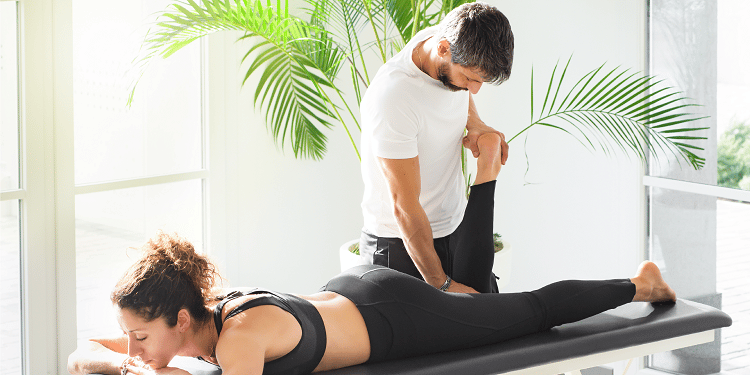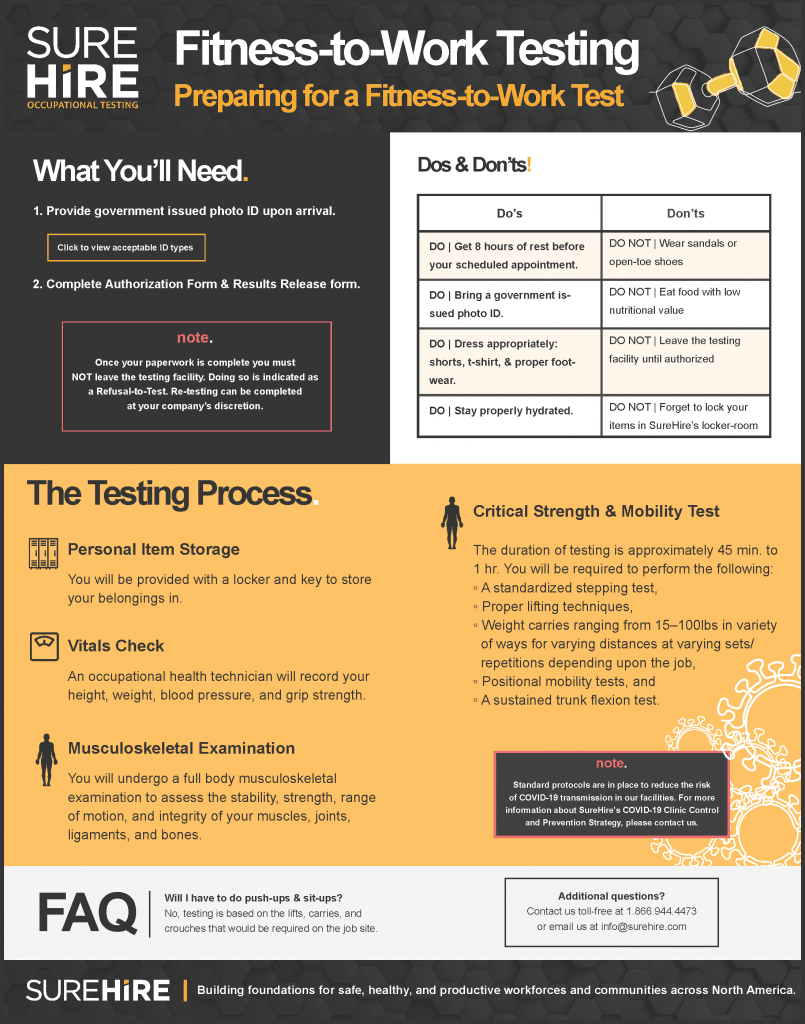Takeaway: There is no quick solution to ramping up one’s physical endurance and strength overnight. Our fitness levels are ultimately determined by the lifestyles we lead and the health decisions we make every day. There are, however, some best practices we can all adopt to support our physical well beings and help with Fitness-to-Work testing preparation.
Many jobs require employees to perform work tasks that are critical to their role (otherwise known as bona fide occupational requirements, or BFOR’s for short). These work tasks may include lifting, carrying, crouching, bending, reaching, and long periods of time spent moving without rest. All of these actions require a certain level of physical strength and endurance to perform them safely; without the required strength and endurance needed, the risk for workplace incidents and injuries to occur increases.
SureHire’s Fitness-to-Work (FTW) program gives prospective employers a glimpse into an individual’s physical ability to complete common worksite activities, such as lifting and carrying, kneeling and crouching. It also alerts the prospective employer to any injuries or illnesses that are present which could pose a safety risk to the individual being able to complete their BFOR’s. Finally, it helps prospective employers identify where accommodations can be made to protect their worker’s overall health and safety.

Misconception: FTW testing is often thought of as a system for employers to exclude individuals from the hiring pool. In actuality, this form of occupational testing is designed to help employers and employees make informed decisions to avoid incidents and injuries on the job.
In this article, we take a deep dive into our FTW testing, with pro tips and tricks to help you maximize testing success.
- Find out how individuals can best prepare for FTW testing, including ways to increase fitness level at home,
- Delve into the various critical strength and mobility evaluations and explore common work-site and everyday equivalencies, and
- Learn more about what participants can expect when they arrive at a SureHire facility for their FTW appointment.
Preparing for a Fit-to-Work Test
FTW testing provides insight that ultimately allows employers to modify work tasks and accommodate for workers with pre-existing conditions or physical limitations, as a means to protect their long-term health. There is no quick solution to ramping up one’s physical endurance and strength overnight. Our fitness levels are ultimately determined by the lifestyles we lead and the health decisions we make every day. There are, however, some best practices we can all adopt to support our physical well beings.
Physical Activity

Note: See your doctor for a medical check-up before embarking on any new fitness program, particularly if you are aged over 40 years, are overweight, or haven’t exercised in a long time.
Let’s just rip the band-aid off! The more physically active you are, the easier it becomes to perform tasks that require strength and endurance. Whether you are jack-hammering concrete, framing buildings, crawling in tight spaces, completing a trunk flexion test, or just playing in the park with your kids, it will be a great deal easier if you incorporate regular physical activity into your lifestyle.
A little goes a long way. Here are some forms of physical activity you can incorporate into your routine.
Regular Walks. Walking is considered to be an aerobic physical activity and refers to the use of oxygen to meet energy demands during exercise via aerobic metabolism. Incorporating 30 to 45 minutes of walking per day into your routine goes a lot further than you might think. In fact, in a report that included findings from multiple well-done studies, researchers found that walking reduced the risk of cardiovascular events by 31% and cut the risk of dying by 32%. These benefits were equally robust in men and women. Protection was evident even at distances of just 5½ miles [~9 kilometres] per week and at a pace as casual as about 2 miles [~3 kilometres] per hour.

Pro Tip: Do it all at once or in chunks as short as 5 to 10 minutes; choose to walk briskly or take more of a stroll. You’ll get plenty of benefit from walking so long as you stick with it.
Proper Hydration
Drinking enough water each day is crucial for many reasons, including regulating body temperature, keeping joints lubricated, preventing infections, delivering nutrients to cells, and keeping organs functioning properly. Being well-hydrated also improves sleep quality, cognition, and mood. So as you prepare for your FTW test, make sure you’re hydrating properly.

Important Note: Many participants visit our facilities to complete Fitness-to-Work testing in addition to other occupational testing, such as drug or alcohol testing. Too much water can result in a dilute urine screening sample, which may lead to inconclusive results.
Good Sleep Hygiene
Sleep hygiene is a normal pattern of rest that occurs during nighttime as part of a biorhythmic cycle that all people require to maintain healthy lives. Proper sleep hygiene involves receiving adequate rest, typically 8 hours, to regain alertness for the following day. Sleep hygiene also means avoiding bad habits that can induce sleep deprivation, which can lead to chronic fatigue, which incidentally, can impair alertness both at home and work.
Sleep hygiene tends to be a concept that falls by the wayside for many people as inadequate sleeping patterns coupled with adverse habits before bedtime like eating food and/or consumption of caffeine or alcoholic beverages can disturb the sleep/wake cycle.
If you or one of your employees is preparing for fit-to-work testing, a good night’s sleep will set the stage for success.
Individuals can prepare for testing by increasing their overall activity level prior to their appointment. Any increase in activity levels, from structured exercise programs to just simply going for more walks, can improve a person’s overall cardiovascular capacity and lead to an increased likelihood of success during their Fitness-to-Work testing.
If individuals have concerns that they do not have the proper technique to safely lift and carry objects, there are a number of resources available online that offer guidance on proper lifting and carrying mechanics and technique.

DID YOU KNOW? Employers can adopt methods to address proper sleep hygiene habits with their employees by introducing fatigue management programs that are economic and practical. Ask us about our 30-minute, virtual, Intro to Fatigue micro-module.
Educating Yourself on SureHire’s Fitness-to-Work Testing Process
FTW testing can seem daunting if you don’t know what to expect. Educating yourself on our FTW testing process is a good place to start if you’re wanting to feel more prepared. Below are the 2 components of FTW testing we get asked about most frequently.
1. Full-Body Musculoskeletal Examination
This involves the examination of flexibility, grip strength, joint integrity, functional movements, and so on, to determine if a participant’s musculoskeletal and medical state safely matches the physical demands of the job being applied for. The examination is based on standardized testing protocols, which have been established using evidence-based research.
Unlike other occupational testing companies, SureHire uses licensed physiotherapists, chiropractors, and athletic therapists to perform the musculoskeletal examination. These healthcare professionals specialize in understanding the integrity of a participant’s muscles, bones, ligaments, tendons, and past/current soft tissue injuries.
2. Critical Strength and Mobility Evaluations
Critical Strength and mobility testing is the final step in the FTW evaluation process. During this step, participants attempt a series of functional movement stations including:
- Step testing (or modified step test),
- Various lifting and carrying tasks,
- Sustained kneeling and crouching, and
- Sustained trunk flexion testing.
Following completion of each station listed above, each participant’s performance is objectively evaluated via measurement of their heart rate, oxygen saturation, and standardized time limits and rest periods. All lifting is closely monitored by certified SureHire staff to ensure that proper lifting technique is demonstrated and performed. Testing is immediately ceased if the participant is at risk of injury.
The Step Test
SureHire’s 3-minute stepping station involves walking up and down 2 stairs continuously for 3 minutes. The pace of the test is pre-determined based on your age. This station intends to allow the test participant to warm up their muscles, identify if they can maintain proper step cadence, and alert SureHire staff to any functional limitations or concerns with ascending or descending stairs.
The Lifting & Carrying Stations: Frequently Asked Questions
Q: How far do you have to carry the weight for a long carry, and do you get to rest in between reps?
- A: The weights that are required to be lifted, and the distances they are required to be carried, will vary depending on the type of testing you are scheduled for, and changes as you progress through each station of the critical strength and mobility (CSM) testing. Weights vary from 15lbs to 100lbs, and distances can vary from 10ft to 20ft.
Q: What is a waist-to-waist lift?
- A: The 10-foot carry station (formerly known as the waist-to-waist station) involves lifting a weighted box off of a waist-height table, and walking with it for a distance of 10 feet and then placing the box on the ground. You then lift the box off of the ground and return it to the starting position on the weight-height table.
Common Lift and Carry Weight Equivalencies
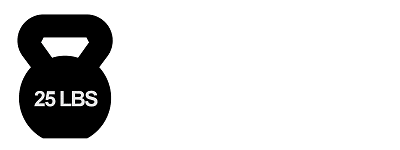
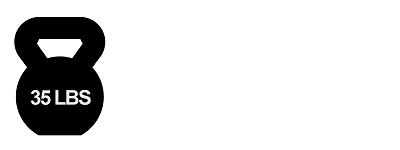
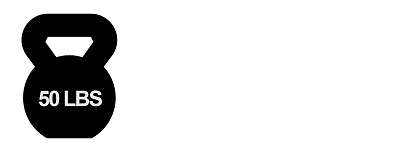
25 lb. Carry
Here are 5 common items that weigh about 25 lbs to give you a sense of this carry weight.
- Watermelon
- 32-Inch LCD TV
- Puli dog
- 2-year-old child
- Dolphin calves
35 lb. Carry
Here are 5 common items that weigh about 35 lbs to give you a sense of this carry weight.
- A cinder block
- 7 computer monitors
- 4-year-old child
- American pit bull
- 22.5 litres of gas
50 lb. Carry
Here are 5 common items that weigh about 50 lbs to give you a sense of this carry weight.
- Large dog food bag
- Fast mixing concrete
- A sack of potatoes
- Male bulldog
- A small mattress
Sustained Tunk Flexion Test
The sustained trunk flexion test evaluates an individual’s lower back muscular endurance and strength by having them maintain a forward-bent position (the hips and lower back should be bent forward 30-60 degrees) for a period of 3 minutes. During this test, an individual must maintain the position continuously for 3 minutes and not move their feet or lift their feet off of the ground.
Fitness-to-Work Testing: Understanding What to Expect
Download the one-pager below for a quick overview of how to prepare for a Fitness-to-Work test, including what to expect, do’s and don’ts, and more.
Conclusion
In conclusion, there are a number of things you can do to prepare yourself or your employees for a SureHire FTW test. Incorporating regular exercise into your daily routine, improving your sleep hygiene, making sure you’re hydrated, and educating yourself on our testing process are a few ways you can set yourself up for Fit-to-Work testing success.
For more information on Fitness-to-Work Testing, contact us. We’re here to answer your questions and make sure you and your employees are properly prepared.
You May Also be Interested in…
- Do You Have Reasonable Suspicion?
 Employers cannot initiate reasonable suspicion testing without first going through the 5-step process. Reasonable suspicion training provides critical information about how to initiate reasonable suspicion testing, including the 5-step process and other tools that employers can use to help manage the misuse of alcohol and drugs in the workplace.
Employers cannot initiate reasonable suspicion testing without first going through the 5-step process. Reasonable suspicion training provides critical information about how to initiate reasonable suspicion testing, including the 5-step process and other tools that employers can use to help manage the misuse of alcohol and drugs in the workplace. - An Employer’s Guide: What You and Your Employees Need to Know About DOT Drug & Alcohol Testing
 When implementing or maintaining DOT Drug & Alcohol testing, there are key areas that employers should consider.
When implementing or maintaining DOT Drug & Alcohol testing, there are key areas that employers should consider. - SureHire Occupational Testing Acquires COHR Health: A Positive Step Towards Safe, Healthy, Productive Workforces and Communities
 We are thrilled to announce that today, May 6, 2024, SureHire Occupational Testing has officially acquired COHR Health, a well-known leader in occupational health services. Read on…
We are thrilled to announce that today, May 6, 2024, SureHire Occupational Testing has officially acquired COHR Health, a well-known leader in occupational health services. Read on… - Occupational Testing Use Case – Mining
 In this case study, we will explore how mining companies can use various types of occupational tests to reduce Total Recordable Incident Rates (TRIR) long term.
In this case study, we will explore how mining companies can use various types of occupational tests to reduce Total Recordable Incident Rates (TRIR) long term. - 9 Strategies to Keep Workers Cool on Drilling Sites During Hot Summer Months
 This article delves into strategies to keep workers cool and safe on drilling sites during the hot summer months.
This article delves into strategies to keep workers cool and safe on drilling sites during the hot summer months. - Hearing Conservation Basics: How to Manage Occupational Noise
 Learn how to proactively mitigate occupational noise risks and help prevent NIHL among workers.
Learn how to proactively mitigate occupational noise risks and help prevent NIHL among workers.
